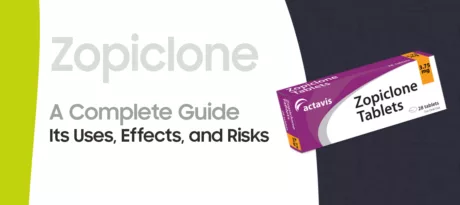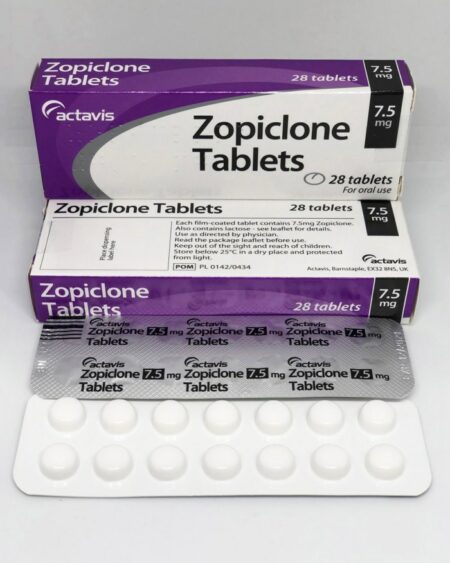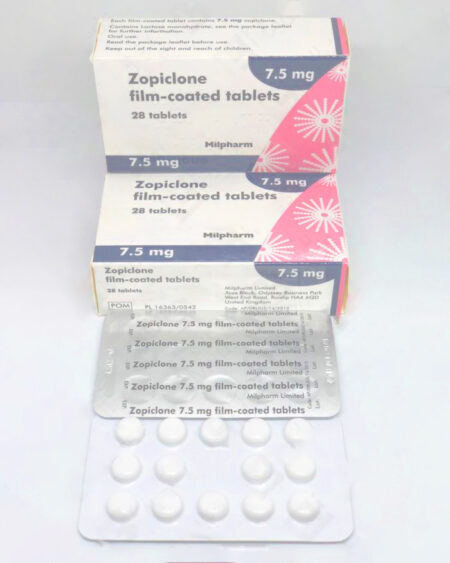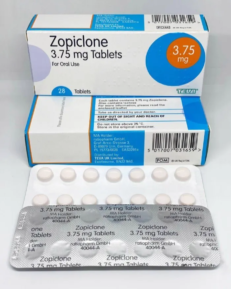Zopiclone is a sleeping pill that helps to get better sleep. It helps to relax the mind and provide proper sleep. It is very useful for insomnia patients. it is mostly used for the treatment of short-term, transient, episodic, and chronic insomnia
Introduction to zopiclone and its uses
Zopiclone belongs to the cyclopyrrolone class and is often referred to as a Z-substance or Z-drug. Unlike many other commonly used sleep drugs belongs to the benzodiazepine class. Because of its sleep-promoting and sleep-enforcing actions, it has an effect on the central nervous system and is typically given for short-term therapy for severe issues with falling asleep and sleeping through the night. Mild sleep problems are rarely treated with sedatives due to the numerous side effects and high risk of dependence.

Uses of zopiclone
- Short-term treatment for significant difficulties falling asleep and sleeping through the night.
- Sleep-promoting and sleep-enforcing.
- Help with mild sleep issues.
- Drugs containing it are thought to have anxiolytic and antispasmodic properties.
- Used as muscle relaxants.
- Can be used in the treatment of restless leg syndrome
The effectiveness of zopiclone for treating different types of insomnia
How zopiclone works to treat insomnia
It works by binding to the central nervous system’s GABA receptors and increasing the flow of the calming messenger chemical GABA into the brain. It has sedative properties that might last up to 10 hours. As a result, when taking it, a sleep period of at least seven to eight hours should be arranged. Otherwise, the so-called hangover effect” and decreased performance the next morning may occur.
Dosage and administration of zopiclone:
What is the correct zopiclone dosage?
The typical daily dose for an adult is zopiclone 7.5 mg, and due to the severe side effects and potential for zopiclone poisoning, it should never be increased by one’s own volition. Typically, the recommended dose is equal to one film-coated tablet. Due to the effects on muscles and the potential for falling, a single dose of zopiclone 3.75 mg (or half a tablet) should not be exceeded in older individuals. Additionally, it is advised to only use the medication in bed.
The effects of zopiclone on the brain and body
What are the zopiclone side effects?
The list of potential negative effects is lengthy. The following are some of the negative sides effects:
●Taste disorders,
●Gastrointestinal issues,
●Headache,
●Dizziness,
●Exhaustion,
●Lightheadedness,
●Depressions
●Visual annoyances,
●muscle weakening,
●Gaps in memory (anterograde amnesia),
●Libido dysfunctions
Risks and side effects of zopiclone use
Changes in taste are one of the most prevalent side effects of medications containing the active component zopiclone. Patients who have used film-coated tablets or other formulations containing the active component frequently report a metallic, unpleasant taste.
Furthermore, many of those afflicted experience common side effects such as nausea, headaches, and tiredness. Paradoxical reactions can also occur, particularly among the elderly. In this situation, the medicine does not treat the sleep issue but instead causes restlessness, panic episodes, and even psychosis.
Common misconceptions about zopiclone
What are the contraindications of zopiclone?
![]() Zopiclone interactions with other medications and substances
Zopiclone interactions with other medications and substances
Zopiclone and pregnancy or breastfeeding
Alternatives to zopiclone for insomnia treatment
- Zolpidem
- Zaleplon (discontinued)
- Diazepam
- Nitrazepam
- Loprazolam
- Flurazepam
Zopiclone and driving or operating machinery
Zopiclone and cognitive function
Zopiclone and depression or anxiety
Patient experiences with zopiclone
Tips for using zopiclone safely and effectively
- Only use for 2-3 weeks.
- Obtain a doctor’s approval.
- Only take it before going to bed.
- Avoid activities that necessitate close attention to detail.
- Do not become addicted.
How does a zopiclone dependence manifest itself, and how is it treated?
How to safely stop taking zopiclone?
Tolerance, dependence, and withdrawal from zopiclone:
If you want to buy Zopiclone, here is a link to an authentic provider






